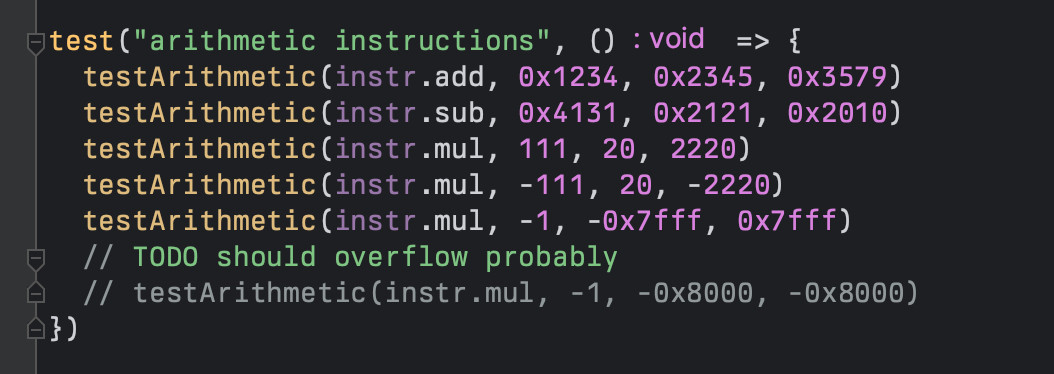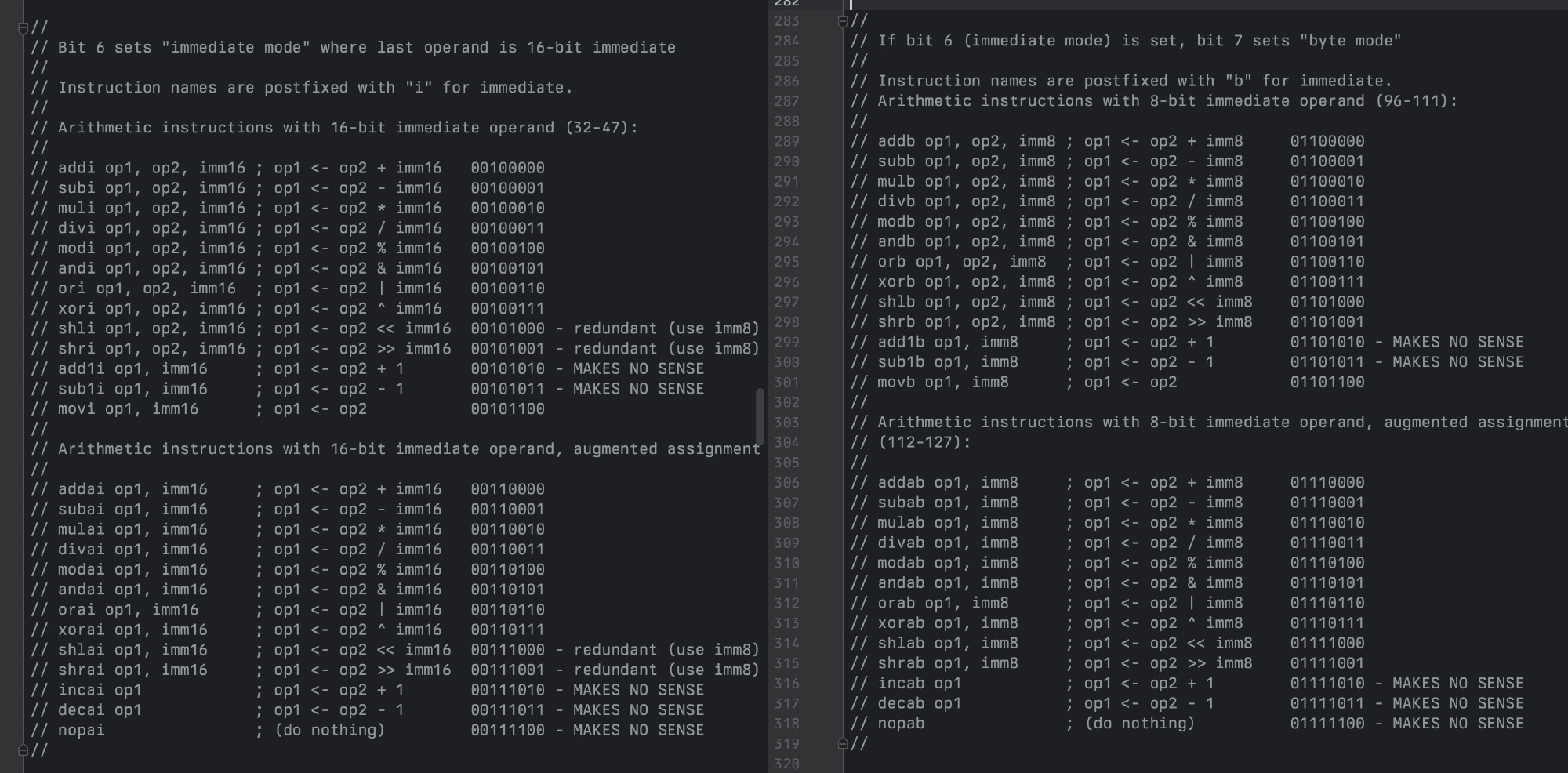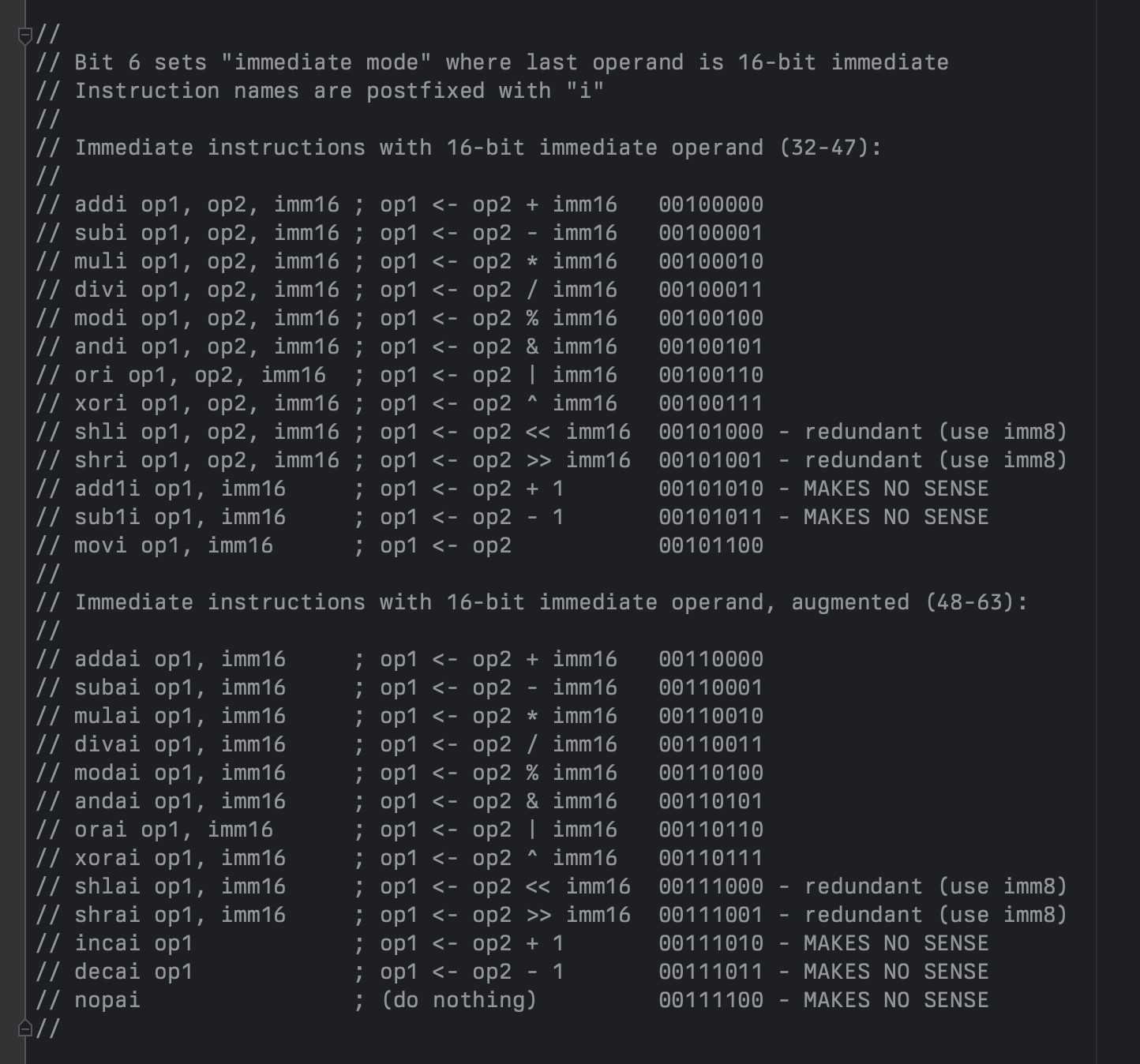That’s why it would only affect your followers — don’t follow people who broadcast wrong signals. I think subtle negative signals would be more useful than generally imagined, but textual medias rarely use them. TikTok can detect when people skip videos, but it’s harder in these Twitter clones
What if we made a social network where instead of liking, blocking and muting, you would “hush” and “boost” posts? Hushing would decrease visibility to your followers. Boosting would increase it. Who’s with me?
“Can you explain this gap in your resume?” Yes, child; that was when I carried you
Thank you! Kissa is a many-splendored thing
Now I need to take a break of few days, weeks, or months, depending on when I next manage to free up some time. This was a miserable week for writing code: I had planned 5 full working days and got some 11+ hours done. But such is life sometimes
Actually need to implement a bunch of arithmetic instructions and test them somehow efficiently. Here's a start.
![List of test instructions that ChatGPT wrote me.
export const opcodes: { [key: number]: string } = {
0b00000000: "add", // add <op1> <op2> <op3> - op1 <- op2 + op3
0b00000001: "sub", // sub <op1> <op2> <op3> - op1 <- op2 - op3
0b00000010: "mul", // mul <op1> <op2> <op3> - op1 <- op2 * op3
// etc, ending with 0b00001100: "mov"
0b00010000: "adda", // add <op1> <op2> - op1 <- op1 + op2
0b00010001: "suba", // sub <op1> <op2> - op1 <- op1 - op2
0b00010010: "mula", // mul <op1> <op2> - op1 <- op1 * op2
// etc, ending with 0b00011100: "nop"
0b11110000: "hlt", // hlt <?> <?> <?> - halt program execution
0b11110001: "hcf", // hcf <?> <?> <?> - halt and catch fire
}](https://cdn.bsky.app/img/feed_fullsize/plain/did:plc:ih3rt6r3sesh2flndp7oefwc/bafkreigk2zydmtc4l3i6wylscfxi32i4miznksorfkn7imorfwcufcoptu@jpeg)


Here's the whole set of immediate instructions. This makes me reconsider the design, not only because of the effort of testing all of that stuff but also because I don't want to type "SHLAB" when I just want to do a 1-bit left shift. Maybe it's time to write some programs first and reconsider this.

I'm deliberately making a 1:1 mapping between names and opcodes to make assembling and disassembling easier. I may have to walk back on this decision later. It makes more complex names for often used instructions: addai a, 1234 ; a: augmented assignment, b: immediate addab a, 10 ; b: byte immediate
Good two hours reserved for today, let's continue with immediate instructions. Since we have augmented mode too, there's quite a bunch of these. Instructions that logically take only 1 argument don't make sense, such as INC/DEC, and some potential ones like NEG, NOT, CLR. Except for MOV.

